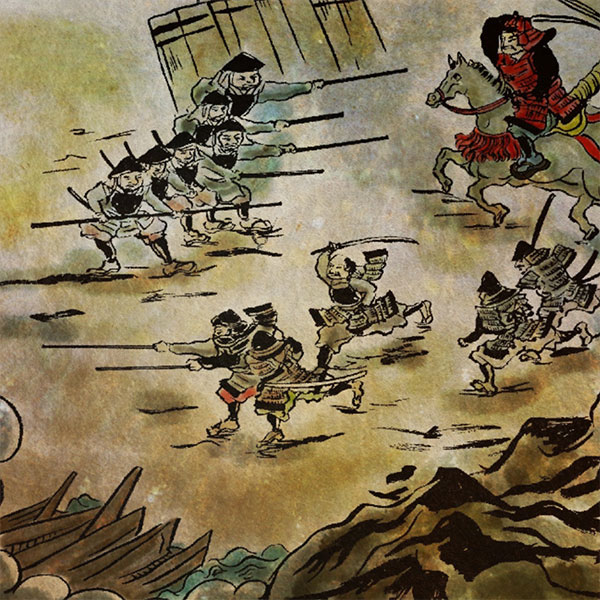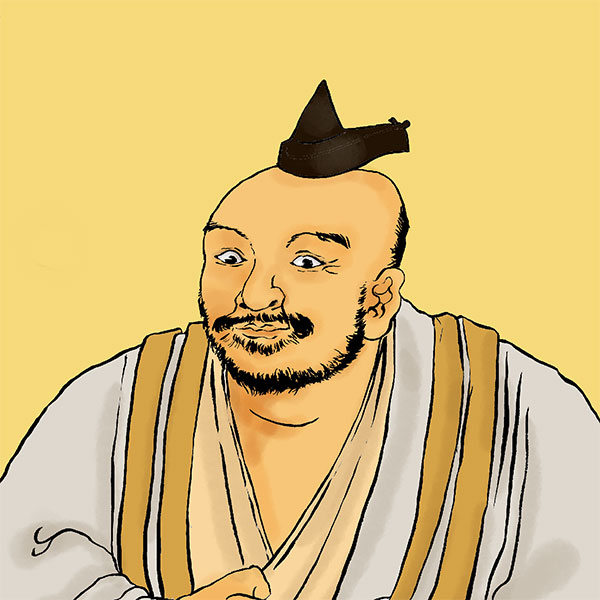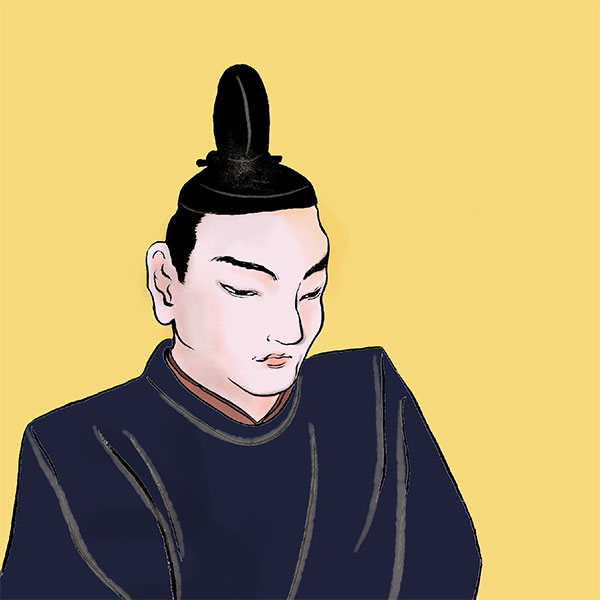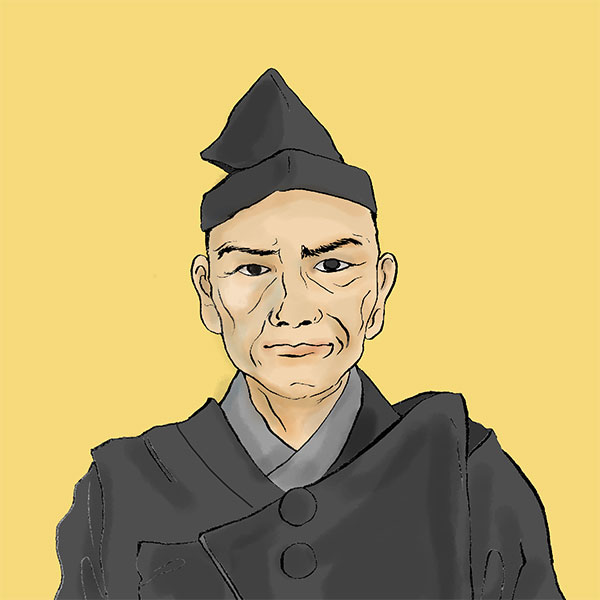Battle of Okitanawate (1/2)Takanobu Ryuzoji vs Harunobu Arima/Iehisa Shimazu

Battle of Okitanawate
- Article category
- case file
- Incident name
- Battle of Okitanawate (1584)
- place
- Nagasaki Prefecture
- Related castles

Saga Castle

Kagoshima Castle
- people involved
On March 24, 1584, Ryuzoji Takanobu and the combined forces of Arima Harunobu and Shimazu Iehisa fought on the Hizen Shimabara Peninsula (present-day Nagasaki Prefecture) in the Battle of Okitanawate. The Battle of Tanawate).” In this battle, the Arima and Shimazu allied forces defeated the large Ryuzoji army and won a major victory, resulting in the death of Ryuzoji Takanobu, the de facto leader of the Ryuzoji clan. As a result, the Ryuzoji clan would decline. The one-day battle had a huge impact on the future history of Kyushu. This time, I will explain the Battle of Okitanawate in an easy-to-understand manner.
Kyushu on the eve of the Battle of Okitanawate
During the Sengoku period, feudal lords continued to struggle for supremacy in Kyushu, and around 1573, when the era name changed from Genkame to Tensho, the Otomo clan took control of northeastern Kyushu and Bungo (central and southern Oita Prefecture), and took control of northwestern Kyushu and The Ryuzoji clan ruled Hizen (Saga Prefecture), and the Shimazu clan ruled southern Kyushu and Satsuma (Kagoshima Prefecture) during the Three Kingdoms period.
After that, in 1578, the Shimazu clan defeated the Otomo clan in the ``Battle of Mimikawa'' that occurred in Takagikawara, Hyuga Province (Kijyo Town, Miyazaki Prefecture), and the Otomo clan weakened. The head of the Otomo clan, Sorin Otomo, managed to survive, but his power was greatly diminished. As a result, two giants began to compete in Kyushu: the Shimazu clan, which had gained power, and the Ryuzoji clan, which had acquired territory from the Otomo clan during the turmoil of the Battle of Mimikawa.
Takanobu Ryuzoji, the key figure in the Battle of Okitanawate
At the time of the Battle of Okitanawate, Yoshihisa Shimazu ruled the country in cooperation with his three younger brothers Yoshihiro, Toshihisa, and Iehisa. On the other hand, the Ryuzoji clan was headed by the Ryuzoji politician, whose father, Ryuzoji Takanobu, known as the ``Kuma of Hizen'' and known as one of the top three in Kyushu, held the real power.
Ryuzoji Takanobu was a heroic figure who unified Hizen Province and made the Ryuzoji clan into a major power, but it is also said that he was a highly suspicious, cunning, and ruthless person. It seems that he was not very popular with his vassals, and by the time he took over as head of the family, he was forced to flee the country due to a rebellion among his vassals.
However, in 1581, Ryuzoji Takanobu passed the reins to his eldest son, the Ryuzoji politician, and retired. However, Takanobu continued to hold the real power. After retiring, he began to indulge in alcohol and women, and as he became obese, his personality as a tyrant began to emerge.
Meanwhile, in the 9th year of Tensho, it was discovered that Chinren Kamachi of Chikugo Province (southern Fukuoka Prefecture) had been informing the Shimazu clan. The Kamachi clan was a loyal retainer who took care of Ryuzoji Takanobu when he was forced out of his home and helped him many times, but Takanobu would not forgive him. He summoned Chinren to Hizen Province for the sake of peace and tricked him into attacking him, then set out against Yanagawa Castle, the stronghold of the Kamachi clan, and slaughtered his entire family. Takanobu's subordinates rebelled against this action, and even some of his subordinates did not go to battle. Furthermore, in 1583, he accused his subordinate Tokie Akahoshi of disobeying his orders, and killed Tokie's son and daughter, who were kept as hostages. Toke, angry at this, abandoned the Ryuzoji clan and joined the Shimazu clan. In this way, some people gradually began to distrust Takanobu's actions and defect from the Ryuzoji clan.
Battle of Okitanawate ① Betrayal of Harunobu Arima
The Battle of Okitanawate was triggered by Arima Harunobu, the lord of Shimabara, defecting from the Ryuzoji clan in March 1584. Although Harunobu is famous as a Christian daimyo, he was initially in a hostile position to Christianity. However, he converted to Christianity in 1580. With support from the Society of Jesus, they will continue to build up their military strength. He served as a vassal of the Ryuzoji clan until just before the Battle of Okitanawate, but switched to the Shimazu clan.
Arima Harunobu's older sister (or younger sister) was married to Ryuzoji Takanobu's eldest son, Masaie, the nominal current head of the Ryuzoji family, and the two families were related. Despite this, Harunobu thought of joining the Shimazu clan, which was fighting with the Ryuzoji clan over Higo (Kumamoto Prefecture). The reason is not clear, but Ryuzoji Takanobu's outrageous behavior may have been one of the reasons. Furthermore, the Arima clan's relatives Junji Yasutomi and Junyasu, father and son, continued to follow the Ryuzoji clan, so Harunobu attacked Fukae Castle (Minamishimabara City, Nagasaki Prefecture), where the father and son were located, and the Shimazu clan also cooperated.
Enraged by Arima Harunobu's defection, Ryuzoji Takanobu orders the Ryuzoji politicians to subjugate the Arima clan. However, the politician was reluctant, perhaps because he did not want to attack his wife's clan. For this reason, Takanobu decided to leave his absence to the politicians and personally led a large army of 25,000 soldiers (there are various theories) to subjugate the Arima clan. Takanobu's right-hand strategist, Nabeshima Naoshige, and others around him called for a halt to the attack on Arima, but Takanobu did not listen to them.
Battle of Okitanawate ② Harunobu Arima requests relief from the Shimazu clan
Arima Harunobu was panicked when the Ryuzoji clan led a large army and requested reinforcements from the Shimazu army. However, the Shimazu army was fighting with the Ryuzoji army over Higo, and it was difficult to send reinforcements to Shimabara. Furthermore, there was an army of Sorin Otomo in Chikuzen (Fukuoka Prefecture), although its power had declined, and there is a possibility that it would move south toward Higo.
However, we cannot abandon Shimabara. Abandoning Harunobu Arima, who had relied on him, could lead to the defection of other foreigners and his subordinates. Furthermore, the enemy general is Takanobu Ryuzoji. For this reason, Yoshihisa Shimazu sent his youngest brother, Iehisa Shimazu, to Shimabara with about 3,000 (*there are various theories) subordinates. He was accompanied by outstanding elites such as Tadamoto Niino, who was said to have ``valor like a demon,'' Tadamune Ijuin, and Tadatomo Kawakami.
Iehisa Shimazu was praised by his grandfather, Tadayoshi Shimazu, for being ``excellent in military tactics.'' His success would determine the outcome of the Battle of Okitanawate.
Battle of Okitanawate ③ Iehisa Shimazu's "Tsurinobushi" strategy
On March 22, the Shimazu army led by Iehisa Shimazu arrives at Hinoe Castle (Minamishimabara City, Nagasaki Prefecture), where Harunobu Arima is located, ahead of the Ryuzoji army. At the military council that was held afterwards, due to the large number of soldiers in the Ryuzoji army, a strategy was proposed to engage in a sustained battle and wait for reinforcements from the main Shimazu army. The total number of allied forces is about 5,000 to 6,000. This was natural considering the military disadvantage, and the Shimadzu army probably dispatched Iehisa with this intention at first. However, Iehisa proposes a bold strategy to deal a blow to the Ryuzoji army by aggressively attacking.
- people involved

- WriterNaoko Kurimoto(Writer)I am a former travel industry magazine reporter. I have loved history, both Japanese and world history, since I was a child. I usually enjoy visiting temples and shrines, especially shrines, and often do ``pilgrimages to sacred places'' themed around historical figures. My favorite military commander is Ishida Mitsunari, my favorite castle is Kumamoto Castle, and my favorite castle ruins is Hagi Castle. My heart flutters when I see the ruins of battle castles and the stone walls of castle ruins.







